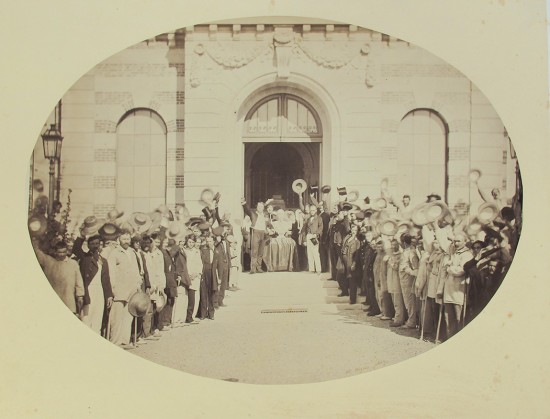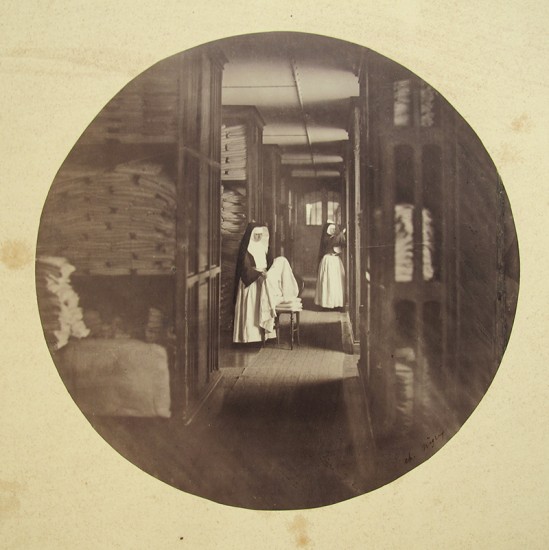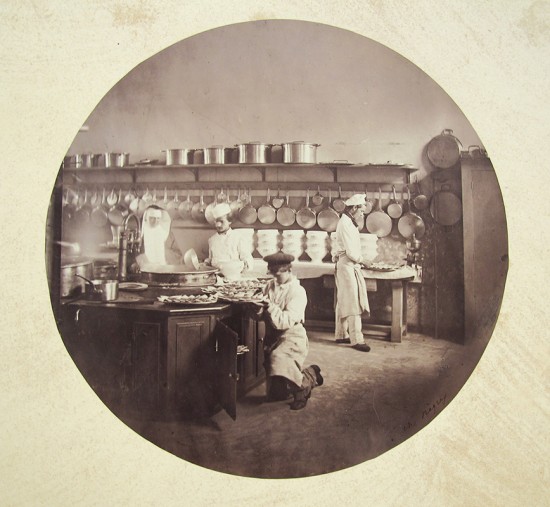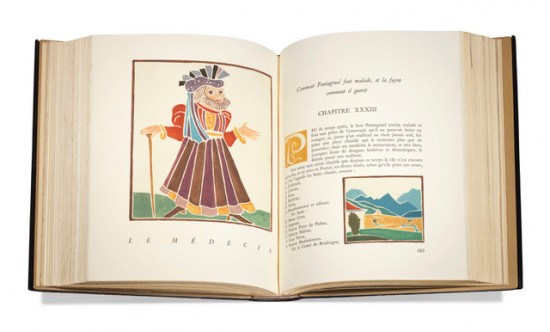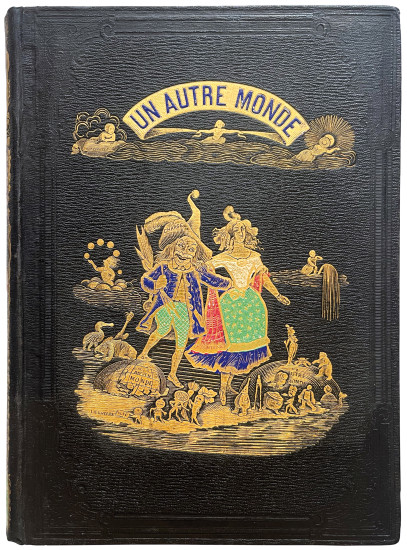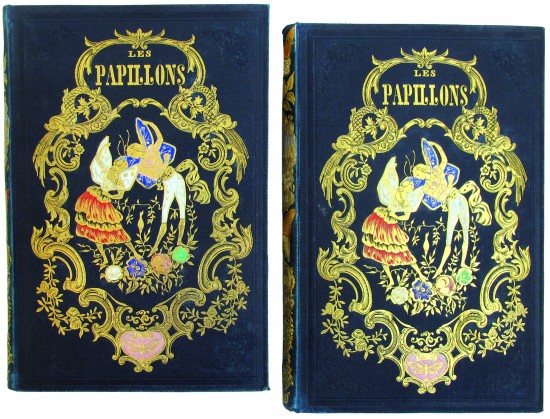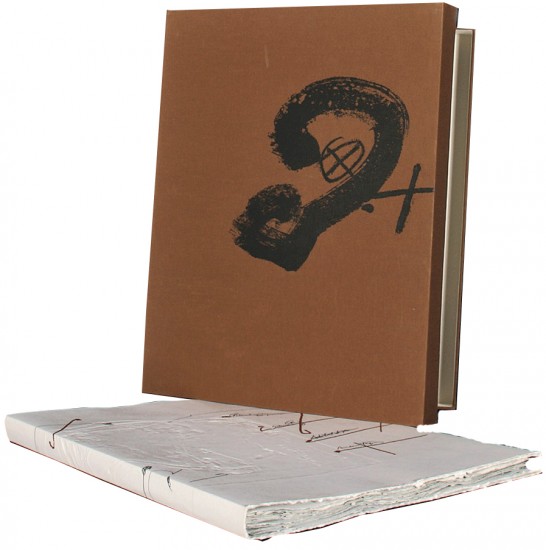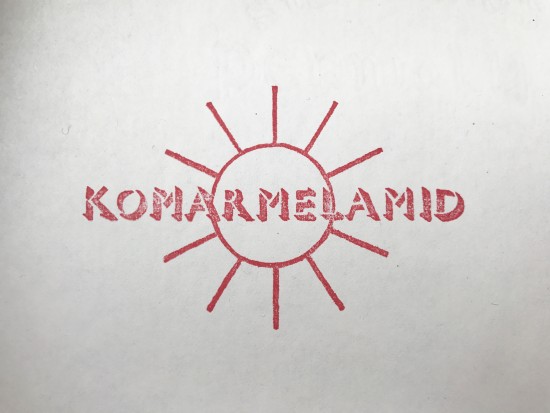Vues photographiques de l'Asile Impérial de Vincennes, 1858
Negre, Charles
(Paris). 1859
Sold
A rare album of photographs by Charles Nègre and one of the earliest examples of photographic reportage with a social aim.
The Asile Impériale was announced in an Imperial decree by Napoléon III of March 8th, 1855 as a refuge for injured workers (to be designed by the architect Eugène Laval) at Vincennes in the Val-de-Marne and the first stone was laid on August 18th. The Asile was opened officially two years later on April 31st, 1857 and the first inhabitants arrived in September. Charles Nègre (1820 - 1880), the painter and student of Ingres and Delaroche who had taken up photography in the early 1840s, was commissioned to photograph and document the Asile at some point between 1857 and 1860 (see below). Nègre's photographs depict the building in a series of interior and exterior views and show its inhabitants in their daily activities as well as the striking image of the celebration of the Emperor's birthday on August 15th. Among the most striking images - and it should be noted most typical - are those interior scenes, cut to circular format and mounted two to a leaf, showing the inhabitants in various interiors (see for example 'la lingerie', 'le réfectoire', 'la salle de café ou de jeu', 'les cuisines').
The lack of any official documentation makes the actual date of Nègre's commission difficult to ascertain, but the presence of the date 1859 in the first photograph (the drawing of the elevation of the Asile) suggests that it was 1858 or 1859. The album itself, one of a number of photographic commissions by Napoléon III, is, at the least, an indication of the relevance of social questions to the Emperor during the course of the Second Empire, but also functions as a highly important document of progressive changes to society during the nineteenth-century. The Asile Impérial de Vincennes was renamed the Asile National des Convalescents de Saint-Maurice in 1900 before acquiring its modern title, the Hôpital National de Saint-Maurice.
The photographs depict the following:
1. Dessin en élévation de l'asile. (Drawing of the elevation of the Asile). - with text 'DECRET DU 8 MARS / 1855' and elaborate decorative border with Imperial eagle at head and Imperial 'N' at corners. (Landscape: 330 x 412 mm).
2. Le salut à l'empereur ou 'le 15 août'. (Greeting the Emperor on August 15th). - Signed in ink by Nègre at lower right: 'Ch. Nègre photog.'. (Oval: 322 x 440 mm).
3. Plan du bâtiment et des jardins. (Plan of the building and gardens). (Landscape: 282 x 410 mm).
4. Grilles d'entrée et pavillon centrale de l'asile. (Entrance gates and central pavilion). - Signed in ink by Nègre at lower right: 'Ch. Nègre photog.'. (Oval: 320 x 432 mm).
5. Corps principal de l'asile. (The main building). - Signed in ink by Nègre at lower right (of image): 'Ch. Nègre photog.'. (Portrait format, mounted horizontally: 412 x 340 mm).
6. Le réfectoire. (The refectory). - Signed in ink by Nègre at lower left: 'Ch. Nègre photog.'. (Landscape: 340 x 435 mm).
7. Salle de café ou de jeu. (The games room). - Signed in ink by Nègre at lower right: 'Ch. Nègre'. (Circular: 174 x 172 mm).
8. Le promenoir sud ou 'côté du midi'. (The South promenade or 'côté du midi') - Signed in ink by Nègre at lower right: 'Ch. Nègre'. (Circular: 172 x 171 mm).
9. Vue sur Charenton depuis l'asile. (View of Charenton from the Asile). (Circular: 172 x 170 mm).
10. Le jeu de tonneau. (Playing thé 'jeu de tonneau'). - (Circular: 172 x 170 mm).
11. La lingerie. (The laundry) - Signed in ink by Nègre at lower right: 'Ch. Nègre'. (Circular: 170 x 170 mm).
12. Les cuisines. (The kitchens) - Signed in ink by Nègre at lower right: 'Ch. Nègre'. (Circular: 170 x 170 mm).
13. La chapelle. (The Chapel). (Circular: 170 x 172 mm).
14. Visite médicale par M. Laborie et ses internes. (Visit of Dr. Laborie with his interns). (Circular: 172 x 170 mm).
15. Façade sur le bois et omnibus des convalescents ou 'La santé départ'. (The facade facing the wood with the convalescents' omnibus) - Signed in ink by Nègre at lower right: 'Ch. Nègre photog.'. (Landscape: 429 x 336 mm).
'Album issu d'une commande officielle de l'empereur Napoléon III ... Il constitue le premier exemple de reportage photographique à but social. En effet l'asile, construit sur les fonds de la cassette personnelle de l'empereur, est la première institution en France à soigner les accidentés du travail.' (Yves Lebrec).
'Le terme de 'reportage social' qu'on a pu appliquer à cet ensemble n'est donc guère adapté: on est loin de la liberté de vue de photoreporter, encore plus loin d'une intention de dénoncer; et l'univers présenté, loin de l'enquête sur les classes laborieuses, est plutôt un paradis artificiel du paternalisme, mis en images à des fins qu'on peut dire de propagande.' (Sylvie Aubenas).
Charles Nègre's photographs are necessarily rare and contemporary albums such as the present are of even greater rarity. We can locate only the present example and that sold by Sotheby's Paris (the Jammes copy) in 2002 at auction, in addition to single images. Examples are also known in several French institutions, however we can locate only that in the Bibliothèque Nationale de France.
[see Sylvie Aubenas, 'Des Photographes pour l'Empereur, Les Albums de Napoléon III', Paris 2004; James Borcoman, 'Charles Nègre, 1820 - 1880', Ottawa, 1976].
The Asile Impériale was announced in an Imperial decree by Napoléon III of March 8th, 1855 as a refuge for injured workers (to be designed by the architect Eugène Laval) at Vincennes in the Val-de-Marne and the first stone was laid on August 18th. The Asile was opened officially two years later on April 31st, 1857 and the first inhabitants arrived in September. Charles Nègre (1820 - 1880), the painter and student of Ingres and Delaroche who had taken up photography in the early 1840s, was commissioned to photograph and document the Asile at some point between 1857 and 1860 (see below). Nègre's photographs depict the building in a series of interior and exterior views and show its inhabitants in their daily activities as well as the striking image of the celebration of the Emperor's birthday on August 15th. Among the most striking images - and it should be noted most typical - are those interior scenes, cut to circular format and mounted two to a leaf, showing the inhabitants in various interiors (see for example 'la lingerie', 'le réfectoire', 'la salle de café ou de jeu', 'les cuisines').
The lack of any official documentation makes the actual date of Nègre's commission difficult to ascertain, but the presence of the date 1859 in the first photograph (the drawing of the elevation of the Asile) suggests that it was 1858 or 1859. The album itself, one of a number of photographic commissions by Napoléon III, is, at the least, an indication of the relevance of social questions to the Emperor during the course of the Second Empire, but also functions as a highly important document of progressive changes to society during the nineteenth-century. The Asile Impérial de Vincennes was renamed the Asile National des Convalescents de Saint-Maurice in 1900 before acquiring its modern title, the Hôpital National de Saint-Maurice.
The photographs depict the following:
1. Dessin en élévation de l'asile. (Drawing of the elevation of the Asile). - with text 'DECRET DU 8 MARS / 1855' and elaborate decorative border with Imperial eagle at head and Imperial 'N' at corners. (Landscape: 330 x 412 mm).
2. Le salut à l'empereur ou 'le 15 août'. (Greeting the Emperor on August 15th). - Signed in ink by Nègre at lower right: 'Ch. Nègre photog.'. (Oval: 322 x 440 mm).
3. Plan du bâtiment et des jardins. (Plan of the building and gardens). (Landscape: 282 x 410 mm).
4. Grilles d'entrée et pavillon centrale de l'asile. (Entrance gates and central pavilion). - Signed in ink by Nègre at lower right: 'Ch. Nègre photog.'. (Oval: 320 x 432 mm).
5. Corps principal de l'asile. (The main building). - Signed in ink by Nègre at lower right (of image): 'Ch. Nègre photog.'. (Portrait format, mounted horizontally: 412 x 340 mm).
6. Le réfectoire. (The refectory). - Signed in ink by Nègre at lower left: 'Ch. Nègre photog.'. (Landscape: 340 x 435 mm).
7. Salle de café ou de jeu. (The games room). - Signed in ink by Nègre at lower right: 'Ch. Nègre'. (Circular: 174 x 172 mm).
8. Le promenoir sud ou 'côté du midi'. (The South promenade or 'côté du midi') - Signed in ink by Nègre at lower right: 'Ch. Nègre'. (Circular: 172 x 171 mm).
9. Vue sur Charenton depuis l'asile. (View of Charenton from the Asile). (Circular: 172 x 170 mm).
10. Le jeu de tonneau. (Playing thé 'jeu de tonneau'). - (Circular: 172 x 170 mm).
11. La lingerie. (The laundry) - Signed in ink by Nègre at lower right: 'Ch. Nègre'. (Circular: 170 x 170 mm).
12. Les cuisines. (The kitchens) - Signed in ink by Nègre at lower right: 'Ch. Nègre'. (Circular: 170 x 170 mm).
13. La chapelle. (The Chapel). (Circular: 170 x 172 mm).
14. Visite médicale par M. Laborie et ses internes. (Visit of Dr. Laborie with his interns). (Circular: 172 x 170 mm).
15. Façade sur le bois et omnibus des convalescents ou 'La santé départ'. (The facade facing the wood with the convalescents' omnibus) - Signed in ink by Nègre at lower right: 'Ch. Nègre photog.'. (Landscape: 429 x 336 mm).
'Album issu d'une commande officielle de l'empereur Napoléon III ... Il constitue le premier exemple de reportage photographique à but social. En effet l'asile, construit sur les fonds de la cassette personnelle de l'empereur, est la première institution en France à soigner les accidentés du travail.' (Yves Lebrec).
'Le terme de 'reportage social' qu'on a pu appliquer à cet ensemble n'est donc guère adapté: on est loin de la liberté de vue de photoreporter, encore plus loin d'une intention de dénoncer; et l'univers présenté, loin de l'enquête sur les classes laborieuses, est plutôt un paradis artificiel du paternalisme, mis en images à des fins qu'on peut dire de propagande.' (Sylvie Aubenas).
Charles Nègre's photographs are necessarily rare and contemporary albums such as the present are of even greater rarity. We can locate only the present example and that sold by Sotheby's Paris (the Jammes copy) in 2002 at auction, in addition to single images. Examples are also known in several French institutions, however we can locate only that in the Bibliothèque Nationale de France.
[see Sylvie Aubenas, 'Des Photographes pour l'Empereur, Les Albums de Napoléon III', Paris 2004; James Borcoman, 'Charles Nègre, 1820 - 1880', Ottawa, 1976].
Oblong folio. (477 x 645 mm). Illustrated with 15 albumen print photographs from glass collodion negatives in various formats (landscape, portrait, oval and circular) each pasted to a chine backing and mounted on 11 leaves of card, the circular photographs mounted two to a sheet; 9 photographs are signed by Nègre in ink (at lower right or left). Card leaves mounted on tabs. (Sheet size: 468 x 640 mm). Condition: Foxing to front free endpaper recto and verso, leaf with first photograph with marginal spotting and soiling, thereafter mounts and photographs in good condition with strong tonal contrast, occasional finger soiling and minor spots to mounts. Contemporary green moiré cloth-backed green glazed boards, title gilt to spine.
#43336
